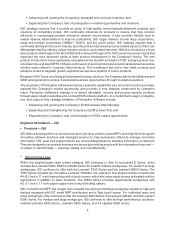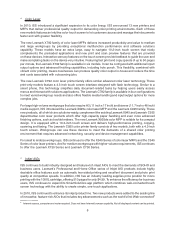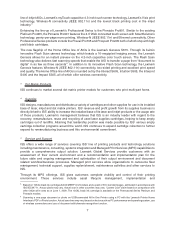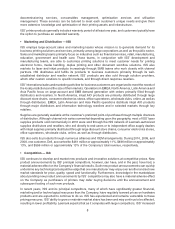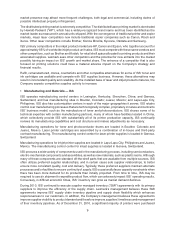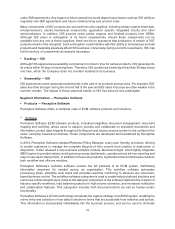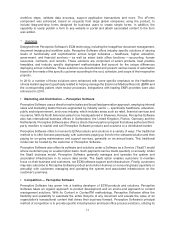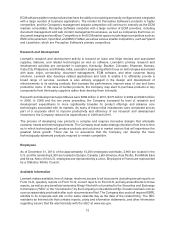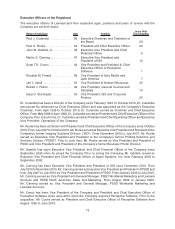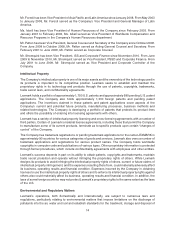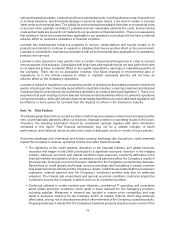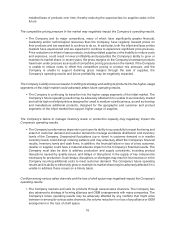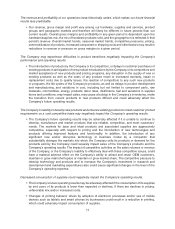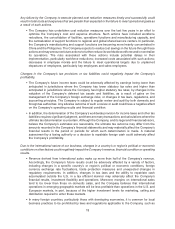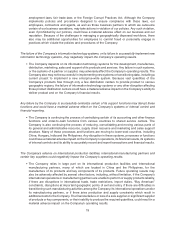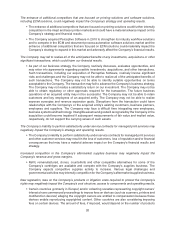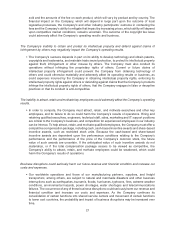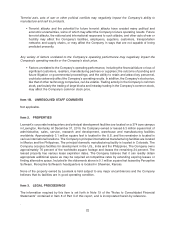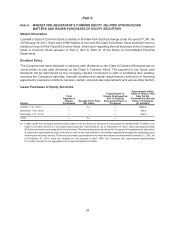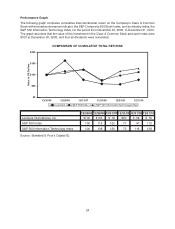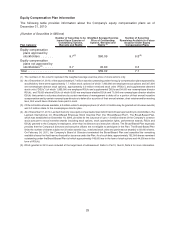Lexmark 2010 Annual Report Download - page 21
Download and view the complete annual report
Please find page 21 of the 2010 Lexmark annual report below. You can navigate through the pages in the report by either clicking on the pages listed below, or by using the keyword search tool below to find specific information within the annual report.solid and hazardous wastes. Lexmark could incur substantial costs, including cleanup costs, fines and civil
or criminal sanctions, and third-party damage or personal injury claims, if we were to violate or become
liable under environmental laws. The liability for environmental remediation and other environmental costs
is accrued when Lexmark considers it probable and can reasonably estimate the costs. Environmental
costs and accruals are presently not material to our operations or financial position. There is no assurance
that existing or future environmental laws applicable to our operations or products will not have a material
adverse effect on Lexmark’s operations or financial condition.
Lexmark has implemented numerous programs to recover, remanufacture and recycle certain of its
products and intends to continue to expand on initiatives that have a positive effect on the environment.
Lexmark is committed to maintaining compliance with all environmental laws applicable to its operations,
products and services.
Lexmark is also required to have permits from a number of governmental agencies in order to conduct
various aspects of its business. Compliance with these laws and regulations has not had, and in the future
is not expected to have, a material effect on the capital expenditures, earnings or competitive position of
the Company. There can be no assurance, however, that future changes in environmental laws or
regulations, or in the criteria required to obtain or maintain necessary permits, will not have an
adverse effect on the Company’s operations.
Lexmark is subject to legislation in an increasing number of jurisdictions that makes producers of electrical
goods, including printers, financially responsible for specified collection, recycling, treatment and disposal
of past and future covered products (sometimes referred to as “product take-back legislation”). There is no
assurance that such existing or future laws will not have a material adverse effect on Lexmark’s operations
or financial condition, although Lexmark does not anticipate that effects of product take-back legislation will
be different or more severe for Lexmark than the impacts on others in the electronics industry.
Item 1A. Risk Factors
The following significant factors, as well as others of which we are unaware or deem to be immaterial at this
time, could materially adversely affect our business, financial condition or operating results in the future.
Therefore, the following information should be considered carefully together with other information
contained in this report. Past financial performance may not be a reliable indicator of future
performance, and historical trends should not be used to anticipate results or trends in future periods.
Economic weakness and uncertainty and foreign currency exchange rate fluctuations, could adversely
impact the Company’s revenue, operating income and other financial results.
• The tightening of the credit markets, disruption in the financial markets, and global economic
recession that began in late 2008 contributed to a significant economic downturn in the imaging
industry. Although economic and market conditions have improved, continuing difficulties in the
financial markets and global economic uncertainty could adversely affect the Company’s results in
future periods. During an economic downturn, demand for the Company’s products may decrease.
Restrictions on credit globally and foreign currency exchange rate fluctuations in certain countries
may impact economic activity and the Company’s results. Credit risk associated with the Company’s
customers, channel partners and the Company’s investment portfolio may also be adversely
impacted. The interest rate environment and general economic conditions could also impact the
investment income the Company is able to earn on its investment portfolio.
• Continued softness in certain markets and industries, constrained IT spending, and uncertainty
about global economic conditions could result in lower demand for the Company’s products,
including supplies. Weakness in demand has resulted in intense price competition and may
result in excessive inventory for the Company and/or its reseller channel, which may adversely
affect sales, pricing, risk of obsolescence and/or other elements of the Company’s operating results.
Ongoing weakness in demand for the Company’s hardware products may also cause erosion of the
15


